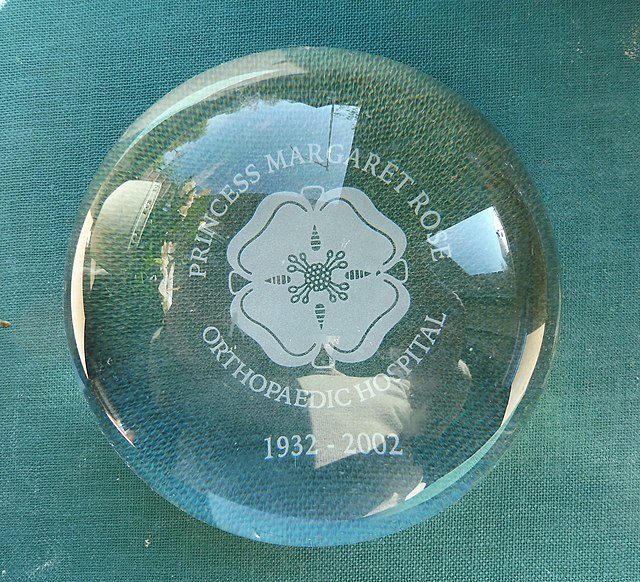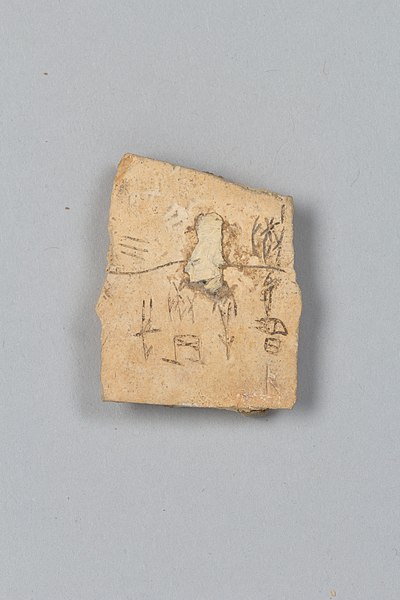A paperweight is a small solid object heavy enough, when placed on top of papers, to keep them from blowing away in a breeze or from moving under the strokes of a painting brush. While any object, such as a stone, can serve as a paperweight, decorative paperweights of glass are also produced, either by individual artisans or factories. The decorative paperweights are usually in limited editions, and are collected as works of fine glass art, some of which are exhibited in museums. First produced in about 1845, particularly in France, such decorative paperweights declined in popularity before undergoing a revival in the mid-twentieth century.
A glass paperweight commemorating the closure of the Princess Margaret Rose Orthopaedic Hospital (2002)
19th century metal paperweight by French sculptor Antoine-Louis Barye
Damon MacNaught, 2018, Pink Millefiori Carpet Ground Paperweight
Antique Clichy Green & White Swirl Paperweight With Large Millefiori Center. Made in France in the Mid 1800s.
Chinese calligraphy is the writing of Chinese characters as an art form, combining purely visual art and interpretation of the literary meaning. This type of expression has been widely practiced in China and has been generally held in high esteem across East Asia. Calligraphy is considered one of the four most-sought skills and hobbies of ancient Chinese literati, along with playing stringed musical instruments, the board game "Go", and painting. There are some general standardizations of the various styles of calligraphy in this tradition. Chinese calligraphy and ink and wash painting are closely related: they are accomplished using similar tools and techniques, and have a long history of shared artistry. Distinguishing features of Chinese painting and calligraphy include an emphasis on motion charged with dynamic life. According to Stanley-Baker, "Calligraphy is sheer life experienced through energy in motion that is registered as traces on silk or paper, with time and rhythm in shifting space its main ingredients." Calligraphy has also led to the development of many forms of art in China, including seal carving, ornate paperweights, and inkstones.

Chinese calligraphy
Oracle bone fragment, Shang dynasty (ca. 1600–1046 BC)
Memorial to Yueyang Tower by Fan Zhongyan, Song dynasty
On Calligraphy by Mi Fu, Song dynasty








